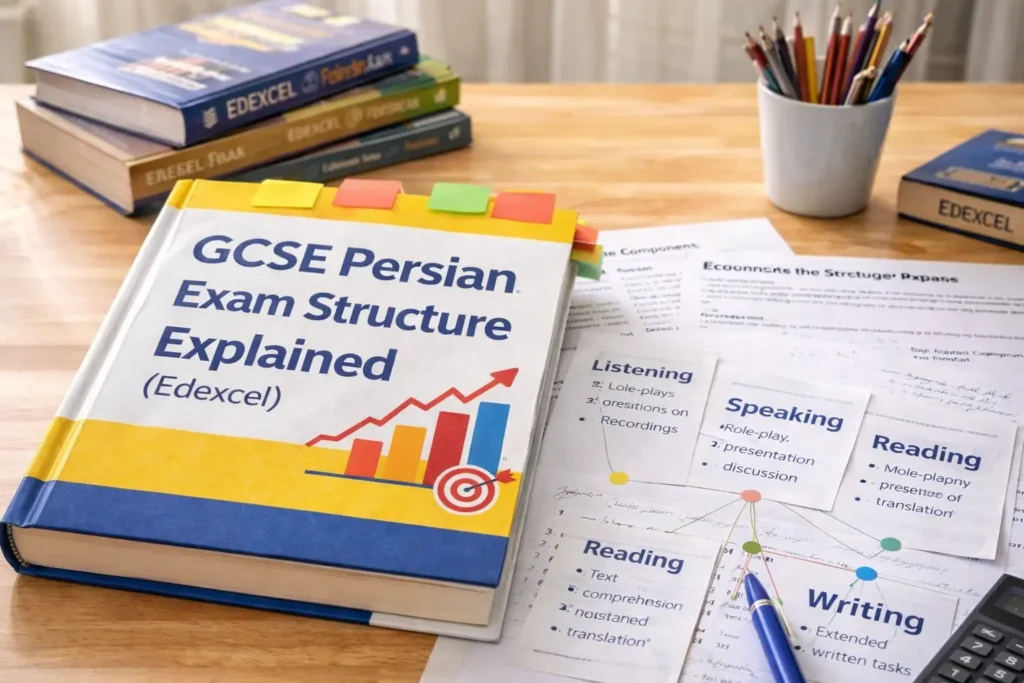Learning a new language can be an exciting yet daunting task, especially when it involves complex scripts and intricate grammar rules. For beginners interested in learning a language from the Middle East, Farsi and Arabic often come to mind. However, many learners find Farsi to be a more accessible option than Arabic. In this article, we’ll compare Farsi and Arabic and explore why Farsi is easier to learn for beginners.
Whether you’re looking to learn Farsi for cultural, personal, or professional reasons, Danaa School is here to help you get started on your journey with expert guidance.
Key Differences Between Farsi and Arabic
When comparing Farsi and Arabic, it’s important to understand their major differences. Though both languages share the same script (with some variations), they are fundamentally distinct.
Language Family:
- Farsi is an Indo-European language, part of the Iranian branch.
- Arabic is a Semitic language, which is structurally quite different from Farsi.
These language families have distinct linguistic roots, which affect everything from grammar to vocabulary and sentence structure.
Writing System – Farsi vs Arabic
Both Farsi and Arabic are written using variations of the Arabic script, but the differences in their scripts are significant.
Farsi Writing:
- Farsi uses a modified version of the Arabic script but has additional letters.
- The script is written from right to left, but Farsi has fewer vowel markings, making it easier to read once you learn the basic characters.
Arabic Writing:
- Arabic script is more complex due to the many letter variations based on word placement (beginning, middle, or end of a word).
- Arabic also includes a system of diacritical marks that are crucial for pronunciation but are often omitted in informal texts, making it harder to read for beginners.
Thus, Farsi’s writing system is generally simpler and more intuitive for beginners.
Grammar – Which is Simpler?
When it comes to grammar, Farsi tends to be more straightforward.
Farsi Grammar:
- Farsi has a relatively simple grammar system, with no gendered nouns or verb conjugations based on gender.
- Sentence structure follows a Subject-Object-Verb (SOV) format, which is easy to follow once you get used to it.
- There are no complex cases or tenses like in many European languages.
Arabic Grammar:
- Arabic grammar is more intricate, with verb conjugations that change depending on tense, gender, and person.
- Arabic nouns are gendered, and the verb system can be challenging, especially when learning irregular forms.
As a beginner, Farsi’s grammar system is generally easier to grasp compared to Arabic’s more complicated structures.
Pronunciation – Is Farsi Easier to Pronounce than Arabic?
Pronunciation is often a make-or-break factor for language learners.
Farsi Pronunciation:
- Farsi pronunciation is relatively straightforward, with a more consistent relationship between written and spoken forms.
- Most letters are pronounced as they are written, and there are fewer guttural sounds compared to Arabic.
Arabic Pronunciation:
- Arabic features a number of sounds that don’t exist in many other languages, including deep throaty consonants.
- The distinction between short and long vowels in Arabic can make pronunciation tricky for beginners.
Farsi pronunciation is generally easier for beginners due to its simpler phonetic structure.
Vocabulary – Similarities and Differences
Farsi and Arabic share some vocabulary due to historical influences, but they differ significantly in terms of everyday language use.
Farsi Vocabulary:
- While Farsi vocabulary has borrowed many words from Arabic, especially in terms related to religion, science, and literature, its core vocabulary is quite different.
- Farsi has fewer loanwords from English, which makes it easier for speakers of Western languages to relate to.
Arabic Vocabulary:
- Arabic, with its rich history, has a vast range of vocabulary that varies significantly across different dialects. This makes learning the “standard” Arabic challenging, as it might differ from regional dialects.
Although both languages share some terms, Farsi vocabulary is generally easier for beginners to learn.
Learning Resources – Availability of Materials for Beginners
The availability of learning resources can significantly impact your language-learning experience.
Farsi Learning Resources:
- Farsi has a growing number of online platforms, courses, and learning apps that cater to beginners.
- Danaa School offers personalized Farsi lessons, which can be a great way to start your learning journey.
Arabic Learning Resources:
- Arabic resources are abundant but can be overwhelming due to the variety of dialects and regional variations.
- Learning Modern Standard Arabic (MSA) is often the focus, but understanding dialects can add complexity.
With Danaa School, beginners have access to structured, easy-to-follow Farsi lessons that break down the language in manageable pieces.
Cultural Context – Why Farsi Might Be More Accessible
Farsi offers a unique entry point into rich Persian culture, which can be more accessible compared to the broader Arab world.
Farsi Culture:
- Iran has a deep cultural history, and learning Farsi opens up access to literature, art, music, and Persian cinema.
- The cultural context of Farsi is often more approachable for learners interested in the history and lifestyle of Iran.
Arabic Culture:
- Arabic culture spans many countries, each with its own unique traditions and dialects, which can make it harder for learners to find a cohesive cultural context.
Learning Farsi allows beginners to tap into a rich and unified cultural history.
Why Farsi is Easier to Learn for Beginners
Given the simplicity in grammar, pronunciation, and writing, Farsi is an excellent choice for beginners looking to dive into a new language. Whether you want to travel, connect with Persian-speaking communities, or understand Persian literature, Farsi offers a manageable and rewarding experience for new learners.
Learn Farsi with Danaa School
Ready to start your Farsi learning journey? Danaa School offers expert-led lessons tailored to beginners. Join us today and immerse yourself in the beauty of the Persian language and culture. Start learning Farsi now with Danaa School!
Find Your Ideal Teacher
At Danaa School, you can choose your Farsi tutor from a selection of qualified and experienced teachers. Begin an exceptional journey into the world of Persian language!

FAQs
Is Farsi easier to learn than Arabic?
Farsi is often considered easier due to its simpler script and phonetic characteristics. Understanding the linguistic nuances, cultural influences, and practical benefits reinforces this perception.
Are there any benefits to learning Farsi over Arabic?
Learning Farsi provides insights into a rich cultural heritage, enhancing the language-learning experience. The discussion on benefits extends beyond language proficiency to practical advantages in various fields.
How can one overcome the challenges of learning Arabic?
Consistent practice, engaging with native speakers, and exposure to diverse dialects can aid in overcoming challenges in learning Arabic. Exploring effective strategies for tackling challenges offers practical advice for language learners.
What resources are available for learning Farsi?
A growing array of online courses, books, and language exchange platforms is dedicated to Farsi learners. Delving into the variety of resources available provides readers with actionable steps to initiate their language-learning journey.
Is Farsi becoming more relevant globally?
Yes, Farsi’s relevance is increasing in diplomacy, business, and academia. Exploring the geopolitical and economic factors driving this relevance offers readers insights into the broader implications of learning Farsi.
Conclusion
While both Farsi and Arabic are rich, beautiful languages with centuries of history, Farsi is often a more accessible language for beginners. Its simpler grammar, pronunciation, and writing system make it ideal for those new to Middle Eastern languages.
Danaa School offers a structured and supportive environment for anyone eager to learn Farsi, from complete beginners to advanced learners. Sign up now.
Want to Learn Farsi at Danaa School?
Here are the best resources for you!







